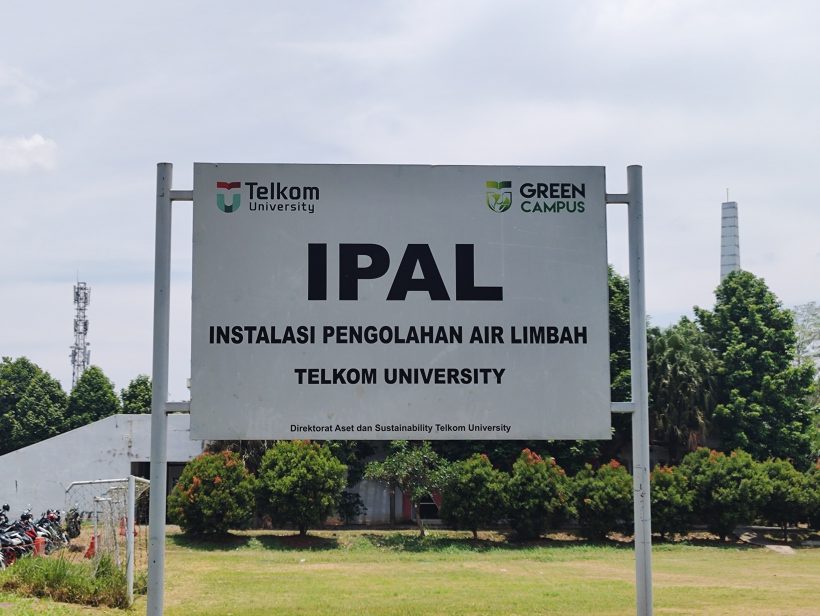As part of Telkom University’s commitment to realizing a Green Campus, wastewater management is an important aspect in creating an environmentally friendly and sustainable campus environment. By introducing the Wastewater Treatment Plant (WWTP), Telkom University is taking concrete steps to maintain water quality and minimize negative impacts on the environment. This program is in line with the campus’ efforts to promote sustainable practices in various aspects of campus operations, including liquid waste management.
What is a Wastewater Treatment Plant (WWTP)?
Wastewater Treatment Plant (WWTP) is a technological system designed to treat wastewater so that it is safe before being discharged back into the environment or reused for various purposes, such as irrigation or watering plants. Wastewater generated from various activities on campus, such as from toilets, canteens, laboratories, and other public facilities, is collected for processing through the WWTP process. This system aims to eliminate hazardous materials, chemicals, and pathogenic microorganisms that can pollute the environment if disposed of without treatment.
WWTP is not only responsible for processing domestic wastewater generated from daily activities, but also waste from laboratory activities that may contain hazardous chemicals. With proper processing, Telkom University can ensure that the water discharged from the campus meets the environmental quality standards set by the government, maintains the ecosystem around the campus and prevents pollution of water resources.
How Does WWTP Work?

The process in the Wastewater Treatment Plant (WWTP) involves several stages to ensure that the wastewater treatment process produced on campus is processed effectively and safely. Here is an overview of how WWTP works:
- Utilization of Treated Wastewater
After going through the processing process, the wastewater produced has met environmental quality standards and is safe to be discharged into the environment or reused. At Telkom University, this processed water can be used for non-portable purposes such as garden irrigation, plant watering, or even for use in cooling systems. - Pre-treatment Stage
At this stage, wastewater entering the installation will go through an initial separation process. Large solid particles such as garbage, sand, and other coarse materials will be filtered so that they do not enter the next processing stage. Usually, mechanical filters are used to separate large materials, while oil and fat are removed through an oil separation process. - Primary Treatment
After going through the filtering, the wastewater will be transferred to a settling tank where smaller solid particles, such as mud and other organic materials, will settle to the bottom. The resulting mud is usually treated separately, while wastewater that has been separated from the mud will proceed to the next stage. - Biological Treatment (Secondary Treatment)
This stage is the core of the WWTP process, where natural microorganisms are used to break down organic matter that is still present in the wastewater. In this biological process, bacteria and microbes in the tank naturally decompose organic matter in the water. This process is very important to remove organic matter that can pollute the water if released into the environment without treatment. - Tertiary Treatment
After going through biological treatment, wastewater will enter the tertiary or advanced treatment stage. At this stage, water is treated using more sophisticated technology, such as sand filtration, activated carbon, or even disinfection with chlorine or ultraviolet (UV) light. This advanced treatment ensures that the water produced is free from harmful bacteria and chemicals that may still remain.
Benefits of Using WWTP at Telkom University
The implementation of Wastewater Treatment Plant (WWTP) at Telkom University brings several benefits to the campus environment and the surrounding community. Some important benefits resulting from the use of this WWTP include:
- Reducing Water Pollution: With a good wastewater treatment system, the campus can prevent pollution of groundwater and rivers around the campus environment. WWTP ensures that the wastewater that is discharged is free from hazardous materials that can pollute natural water sources.
- Saving Water Resources: Wastewater treatment that allows the reuse of water for non-potable purposes helps reduce clean water consumption. With this, Telkom University contributes to saving water use, which is important amidst the increasing need for clean water.
- Health and Environmental Cleanliness: With good wastewater management, the risk of spreading disease due to wastewater contamination is significantly reduced. This also has a positive impact on the health of the community around the campus.
- Supporting the Green Campus Vision: The implementation of WWTP is in line with Telkom University’s grand vision in creating an environmentally friendly campus. This system shows that the campus is not only committed to education, but also to environmental preservation through the use of green technology.
Towards a Sustainable Future
Telkom University continues to be committed to developing sustainable infrastructure, including through better wastewater management. By implementing WWTP, the campus demonstrates its responsibility towards the environment and makes a real contribution to creating a greener and more sustainable future.
The WWTP system at Telkom University not only maintains the cleanliness of the campus environment, but also serves as an example of green technology innovation in the education sector. Through effective wastewater management, the campus contributes to the preservation of water resources and inspires other institutions.


Leave a Reply